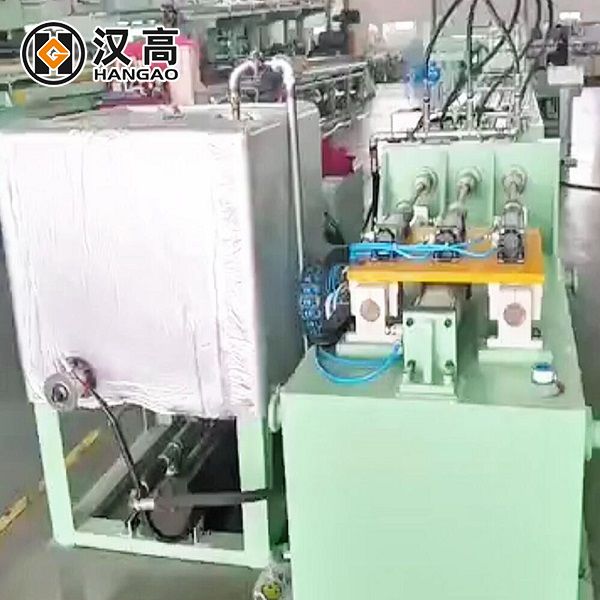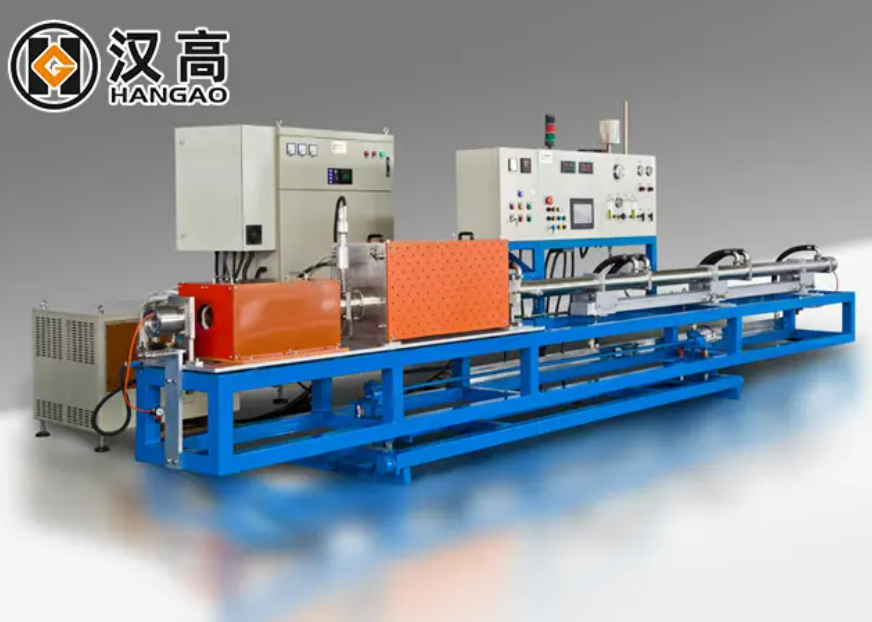Drawing is one of the important forming processing methods in the manufacturing industry. It is a process that uses mechanical forces such as tension and shear force to enlarge and thin the metal. It is suitable for manufacturing metal products such as wires, pipes, and threads that require high strength and high surface quality. However, a certain degree of deformation, strain concentration and residual stress will inevitably occur during the drawing process. Is annealing treatment necessary for drawn pipes? Let Hangao bring you to have a look today.

Annealing heat treatment
Annealing is another important process in drawing. It eliminates stress in the metal and reduces grain boundary energy by heating and slowing down the cooling rate, thereby achieving the effect of softening and increasing grains. Annealing can be divided into full annealing, spheroidizing annealing, recrystallization annealing and other methods. Among them, spheroidizing annealing can be used in pipe production. Through forced cooling and controlling time and temperature, the grains are enlarged and spherical, which improves the ductility and weldability of the metal. Recrystallization annealing can remove deformation hardening and residual stress in the material, and make the crystal grow again to form new grain boundaries.
In general, annealing is an indispensable part of drawing processing, which can make the metal obtain better mechanical properties and surface quality, as well as better processability and usability. However, different materials and different products need to be treated accordingly according to the specific situation. Only by strictly mastering the technical points and process flow of solution annealing heat treatment can the quality and performance of the final product be guaranteed.
1. Process Differences
1) Annealing of Cold-drawn Steel Pipe
Cold-drawn steel pipes usually need to be annealed during the production process to improve their mechanical properties and processing performance. The specific process is: first, the cold-drawn steel pipe is heated to a certain temperature, then kept warm for a period of time, and finally cooled slowly. This process can refine the grains of the cold-drawn steel pipe, eliminate stress, and improve the plasticity and toughness of the steel pipe.
2) Cold-drawn steel pipe without annealing
In some cases, cold-drawn steel pipes can also be annealed without annealing. For example, when the wall thickness of the cold-drawn steel pipe is thin and the diameter is small, annealing is not required to achieve the required mechanical properties. In addition, if the cold-drawn steel pipe is to undergo subsequent processing, such as cold bending, welding and other processes, annealing can be omitted.

2. Differences in performance
1) Annealing of cold-drawn steel pipe
Through annealing, the grain size of the cold-drawn steel pipe can be controlled, thereby improving the mechanical properties of the steel pipe. Specifically, annealing can reduce the yield strength and tensile strength of the steel pipe, but can improve its plasticity and toughness. In addition, annealing can also eliminate stress and improve the processing performance of the steel pipe.
2) Cold-drawn steel pipe without annealing
If annealing is not performed, the mechanical properties of the cold-drawn steel pipe may deteriorate. Because there are residual stresses in the manufacturing process of the cold-drawn steel pipe, if annealing is not performed, these stresses will affect the mechanical properties of the steel pipe. In addition, the grain size of the cold-drawn steel pipe without annealing may also be larger, thus affecting its plasticity and toughness.
3. Precautions
During the cold-drawn tube annealing process, the following aspects need to be noted:
1) Uniform temperature
When annealing the cold-drawn tube, it is necessary to maintain the uniformity of the heating temperature to prevent the cold-drawn tube from deforming. During the cooling process, it is also necessary to maintain the uniformity of cooling to avoid problems such as tube deformation.
2) Control the annealing time
The annealing time is generally long, and the time needs to be controlled well to make the temperature of each place as uniform as possible to ensure the annealing effect.

3. Reasonable selection of cooling method
After annealing, the cold-drawn tube should be stored in a sealed manner or other protective measures should be taken to prevent unnecessary changes during storage.
In short, the cold-drawn tube annealing process is an important process in the production of cold-drawn tubes. By reasonably regulating the annealing process, the physical properties and formability of the cold-drawn tube can be improved, the quality of the final product can be controlled, and customer needs can be better met.
4. Summary
In summary, the difference between annealing and non-annealing of cold-drawn steel tubes lies in the differences in process and performance. For the manufacturing of cold drawn steel tubes in general, annealing is necessary to improve the mechanical properties and processing performance of the steel tubes. However, in some cases, such as when the wall thickness of the cold drawn steel tube is thin, the diameter is small, or subsequent processing is required, annealing may not be performed.
















